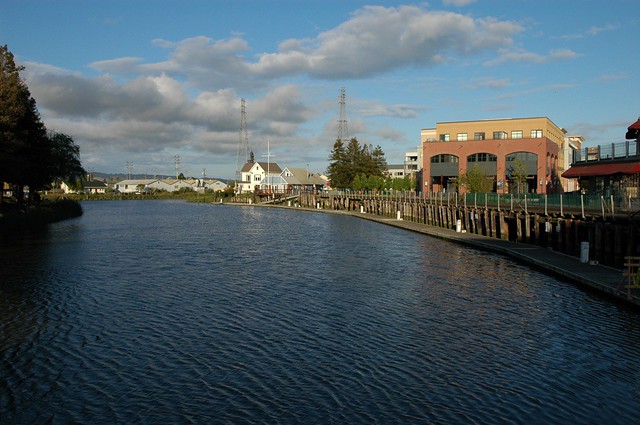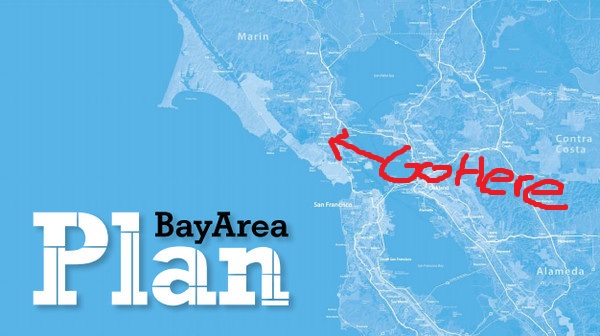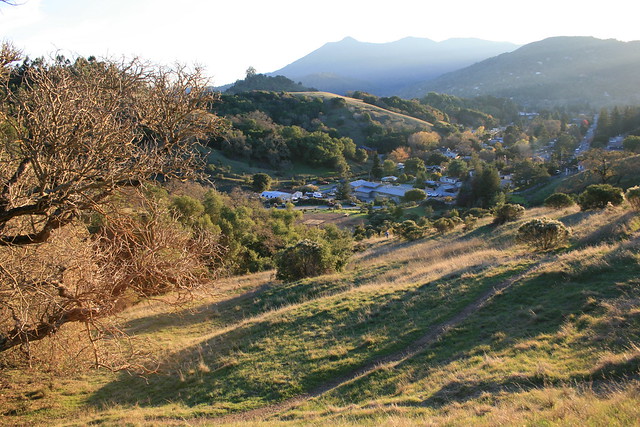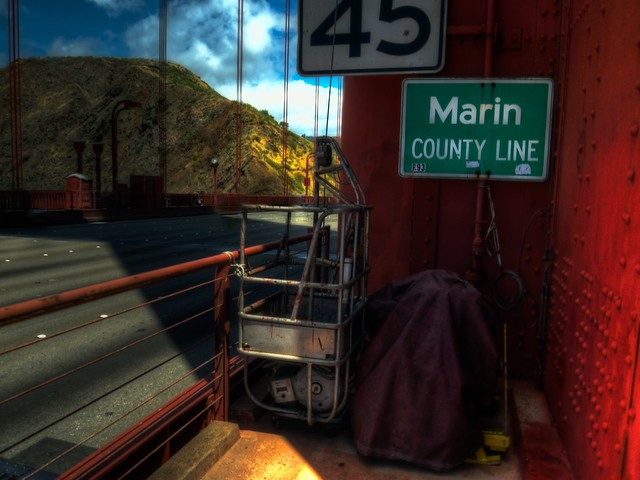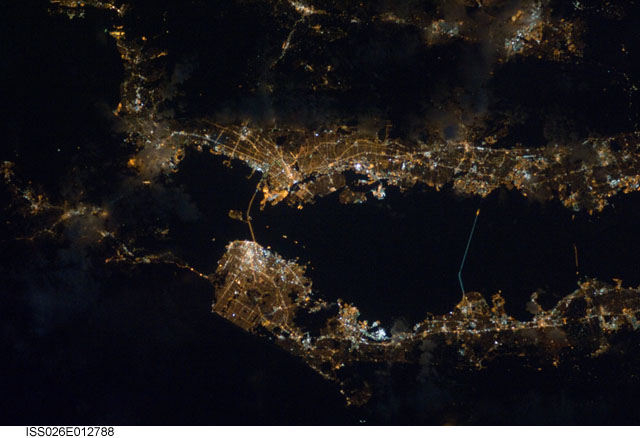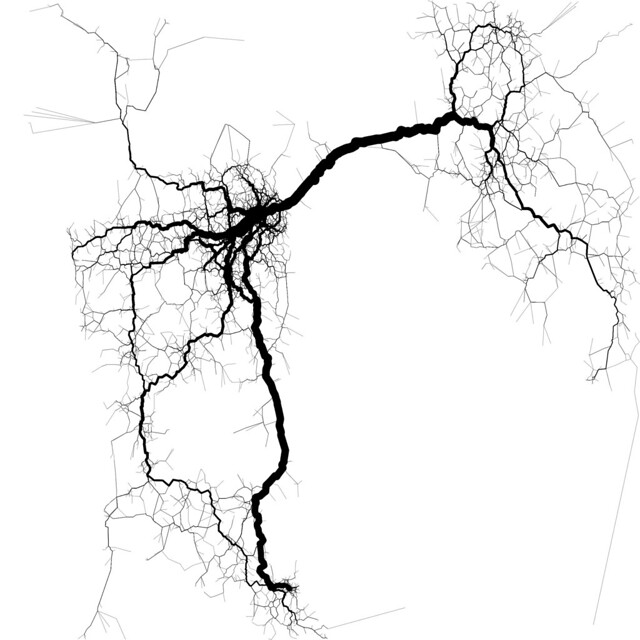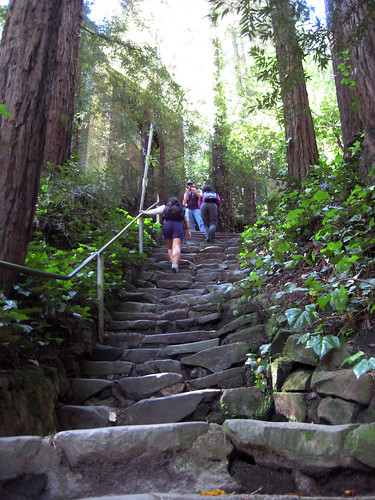There seems to be a majority forming on the San Rafael City Council to rescind the Civic Center Planned Development Area (PDA). At last week’s special session on the subject, three of the city’s five councilmembers (Mayor Gary Phillips, Councilmember Damon Connolly, and Councilmember Kate Colin) expressed opposition to the PDA. While each expressed their own reasons for opposition, most swirled around the idea that, if we keep the PDA, San Rafael will be obligated to build massive quantities of affordable housing in an area that cannot support it. Fortunately, this is simply untrue.
What would the PDA actually do?
PDAs are an investment vehicle originally created by MTC. Cities tell regional agencies where they plan to focus population and job growth, and the region earmarks regional transportation money for those areas. In Marin, MTC requires that half of those regional transportation funds go the county’s PDAs. The other half can go to transportation projects anywhere in the county. While there is some talk in Sacramento to channel climate change transportation funds exclusively to PDAs, that proposal has not been finalized.
To help guide local planners, each PDA has a different “place-type” designation, which provides nonbinding guidelines about residential density and the quality of transit service. North San Rafael is a Transit Town Center, which MTC recommends should have or plan for between 3,000 and 7,500 housing units.
But, as a nonbinding recommendation, there is no obligation on San Rafael to actually zone for or build the recommended number of housing units. Rather, the recommendation is there to help San Rafael planners craft a local plan, which was done with the Station Area and General Plans.
There is concern about CEQA streamlining for affordable housing projects within PDAs, but the state doesn’t obligate the city or county to loosen its own environmental review processes. If the city decides a project shouldn’t receive CEQA streamlining, it won’t. This, as the only non-funding legal aspect of a PDA, is still well within the control of the city.
So what is the fear?
Anti-development (“slow growth”) activists in North San Rafael are concerned that the PDA creates an obligation to the city to zone for thousands more housing units than it could actually support, clogging streets, stuffing classrooms, and putting people in harm’s way along busy, high-speed arterial streets. We don’t have the water, don’t have the class space, don’t have the road space, and don’t have the tax revenue to take in so many new people.
But the PDA doesn’t obligate a thing. Mayor Phillips Councilmember Colin had another answer to that. They said it would be dishonest to use a place-type with a higher housing guideline than could realistically be put into the area without adverse impacts to existing residents.
As a nonbinding guideline, then, it would make sense for the city to simply downgrade the PDA to a level that falls in line with the existing level of housing development. In fact, this is precisely what Councilmember Andrew McCullough proposed, and is one of the optional resolutions for Monday’s council meeting.
Why would we want a PDA?
Because North San Rafael has over $25 million in transportation needs, and the city is considering raising a sales tax because it can’t fund its existing obligations. It needs some extra funds if it wants to improve the neighborhood’s roads.
In fact, one project is very likely to be funded with PDA money: the proposed improvements to the Civic Center campus. Without the PDA, the $3 million project will be ineligible for regional money, and TAM will be forced to shift those funds to another PDA in the county.
But beyond that, a theme of those who spoke in favor of the PDA was that the neighborhood was unfriendly and unsafe for people walking or biking. Given the relative lack of bike lanes, bad connections to regional and local transit, and missing or crumbling sidewalks, it’s a wonder people haven’t been killed. Drivers, too, need to battle with congestion. They have been patiently waiting for a new freeway interchange for years.
All this could be funded by regional transportation dollars, or would need to compete with projects in the rest of the county. The PDA, as a funding tool, would put these projects on a fast track for approval and funding. Removing the PDA would likely cut the neighborhood off for years.
Politics, not policy, is at work
So the PDA doesn’t obligate any development, doesn’t obligate any zoning, and provides a way to make North San Rafael safer for kids to walk to school and commuters to get to the bus. If the PDA does start to obligate the city to do things it does not want to do, or even if it’s threatened, the city could rescind the PDA with no problem at that point. So why is the council voting on Monday? Alas, it’s about politics, not policy.
It’s an election year. Councilmember Damon Connolly is running against Susan Adams and Councilmember Kate Colin is fighting for her seat against slow-growth candidate Randy Warren. The county’s slow growth movement has fought against PDAs as a proxy for their fight against Plan Bay Area.
By setting themselves up against the North San Rafael PDA, Connolly and Colin are betting they can inoculate themselves against attacks from that camp. At first glance, that seems like a safe bet. Polling from One Bay Area shows that those with anti-development sentiment are more passionate about the issue and are more likely to vote than their counterparts.
Yet they are forgetting that Marinites want choices in how they travel and how they live. It’s not as easy a sell on the campaign trail, but it would be the way for Mayor Phillips and Councilmember Colin to knock the wind out of the slow-growth lobby.
The best compromise is to vote for downgrading the PDA. While it won’t satisfy those who lead the movement, it will show that the council is concerned about density and height while balancing it against transportation improvements North San Rafael desperately needs.









